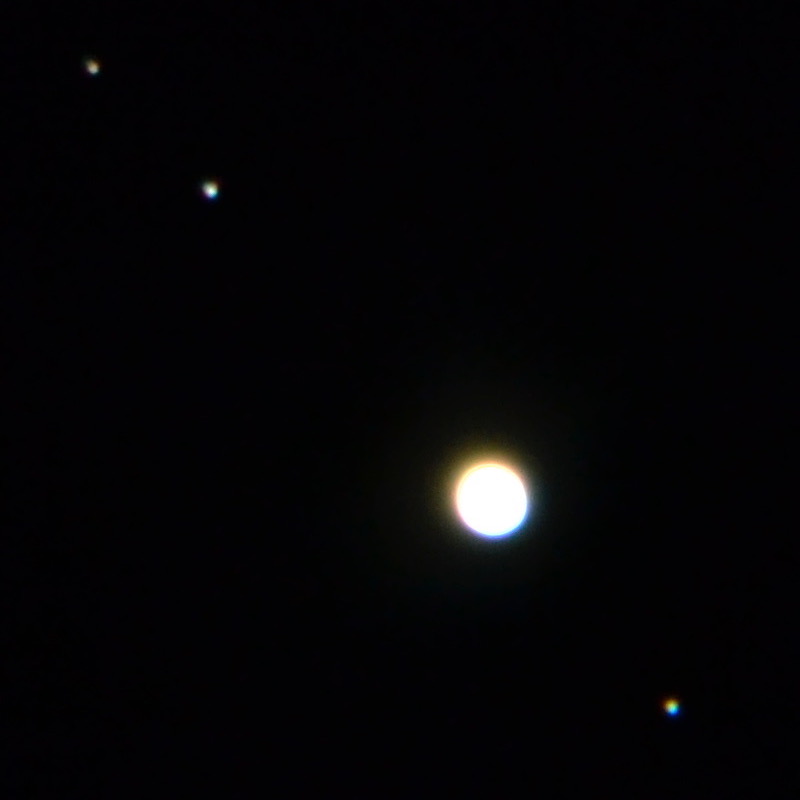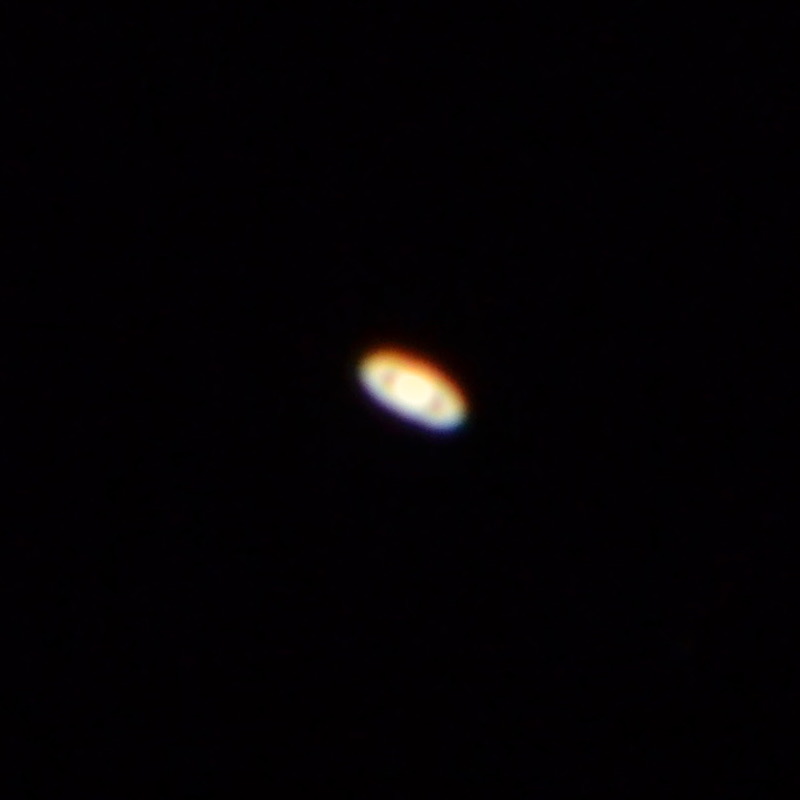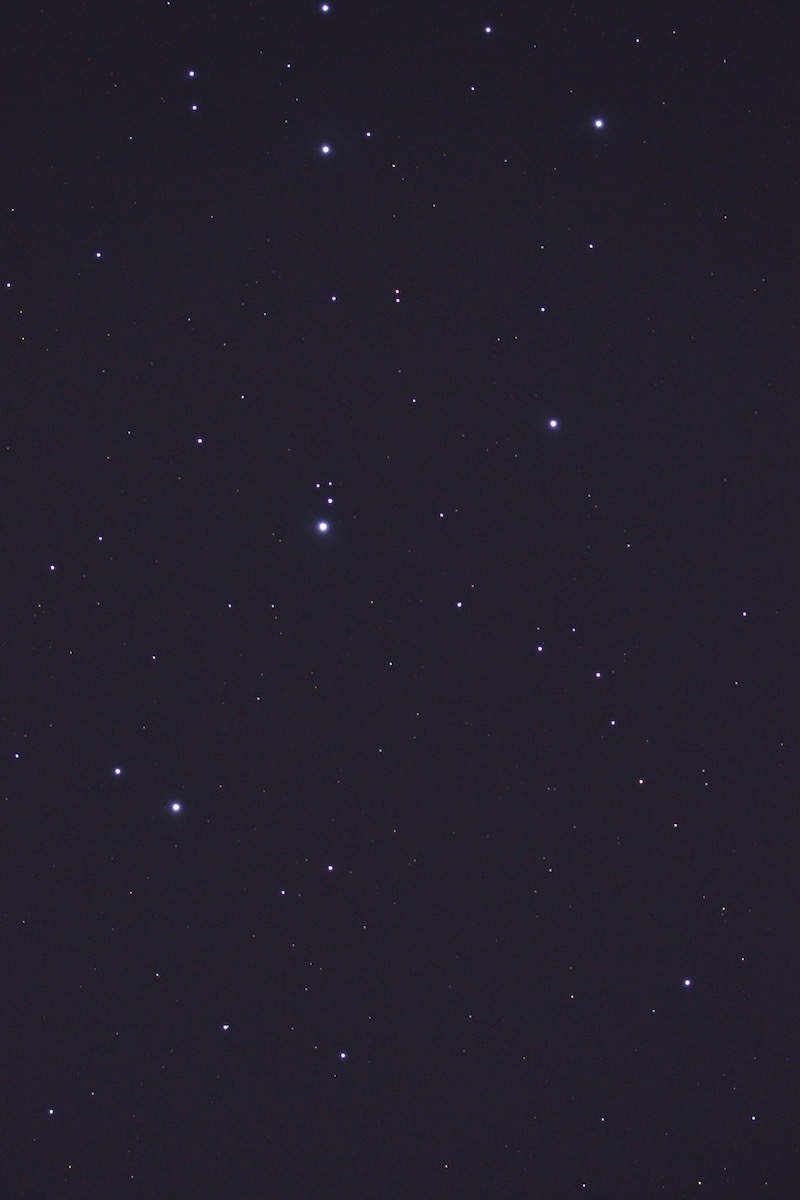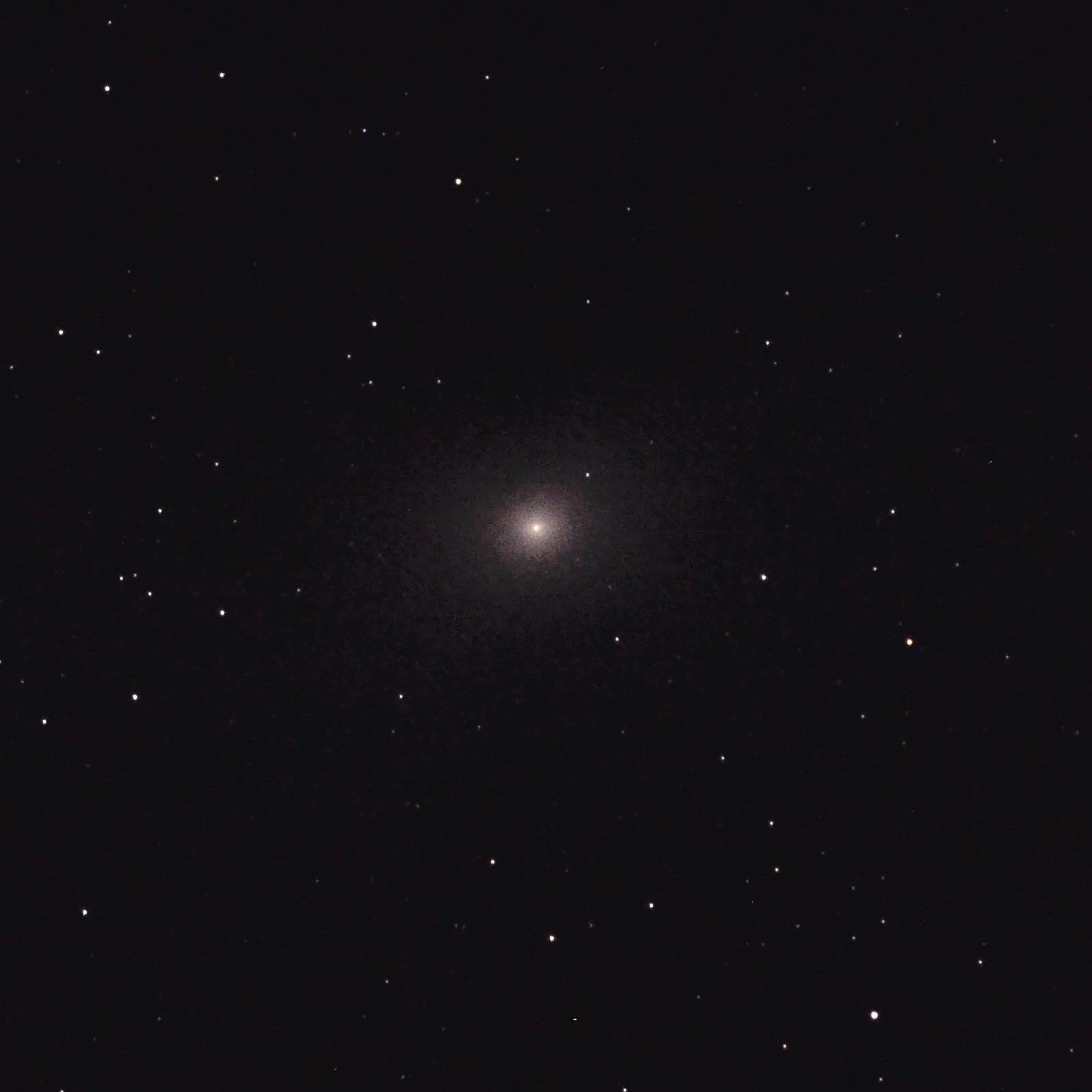This afternoon I set up my telescope in my living room to get some comfortable daylight familiarity with it. I wanted to
- Verify the counterbalance weight and balance position of the telescope tube.
- Establish the baseline positions for focus with just an eyepiece, camera at prime focus, and camera with eyepiece.
- Determine the correct configuration for eyepiece in extender tube.
- Write down a checklist for the steps to set up the automated alignment.
I got all that done. I used a Sharpie to draw what turned out to be two positions of the focus tube. The idea here is that if I attach the eyepiece with the 45° mirror, I can just roll that focuser knob to close to where it’s supposed to be, and then have something real to focus on. Then when I swap that out for the camera, with or without eyepeiece, I can establish a reasonable initial focus. Getting that done really made changing viewing modes and reestablishing focus easy.
The Go-To controller has a few oddities in the UI. In some places, you select 1, 2, or 3 from menu items by pressing the 1, 2, or 3 keys. In other places you have to have the menu item you want selected, and press the Enter button. There are two up and down arrows. One set belongs to the movement keys, and one set is for navigating the menus. Don’t get them confused or you’ll get the controller confused. But I made my step-by-step list, which I will consult until I know it.
My observation goals were Jupiter, Saturn, the Pleiades, and whatever else was visible. The Orin Nebula hadn’t risen yet, so that wasn’t going to happen. I also intended to try different exposures. I dialed the sensitivity way back to only 400 ISO, and took exposures of each object with 1, 2, 4, 8, 15, and 30 seconds.
First, Jupiter.

I think I should be able to get better detail. It will take lots of bracketing of exposures to get the right combination of sensitivity and exposure time. This was ISO 400 at 2 seconds. Jupiter is bright! Here’s Saturn, ISO 400 at 1 second. Ring!

Then I went for the Pleiades. They were so dim in the sky that I could not see anything in the camera viewfinder, though I could in the small finder scope. But I had been getting good results with the go-to mount, so I just told it to head for M45, and took a bunch of images. Next time: dial up the sensitivity and do longer exposures. This was ISO 400 at 30 seconds. I am pleased with the focus! This image is the full frame that my camera got. The others are all cropped down to 800×800 from the original 4068×3072.

And finally M31, the Andromeda galaxy. This was 15 seconds at 400 ASA. It could also have stood more exposure.


Be First to Comment